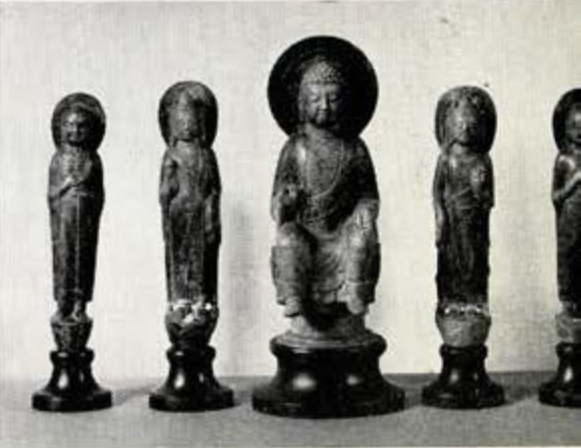Brief descriptions of less important objects not mentioned in the foregoing survey, but which are usually on exhibition in Harrison Hall.
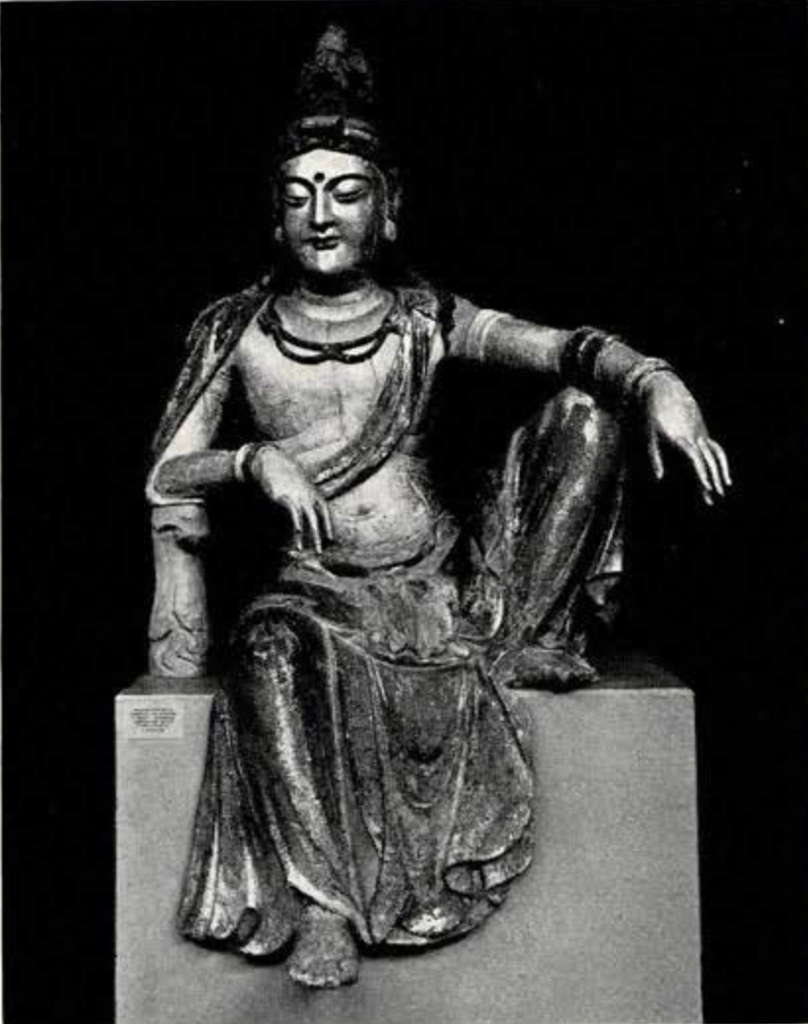
Image Number: 1422
Overlifesize Figure of a Seated Bodhisattva
Wood, overlaid with gesso, coloured and gilt.
The deity is depicted in the pose known as the maharajalila or pose “of royal ease” (?). Figures of this character, although without identifying symbols, are usually identified as the bodhisattva Avalokitesvara or Kuan Yin. Several parallel examples exist in public and private collections, but the present statue is the largest known.
The gesso has apparently been applied in many successive layers, indicating that the statue had been several times restored in the course of the centuries. Note should be made of the areas where the gesso is applied in low relief designs and thereafter gilded. This seems to be a technique first introduced at the end of the T’ang Dynasty.
Height 7 feet.
Yüan Dynasty (1280-1368) or perhaps a little earlier.
University Museum. Journal, Vol. XV, No. 4; International Studio, June 1922; Siren, Chinese Sculpture, pl. 586.
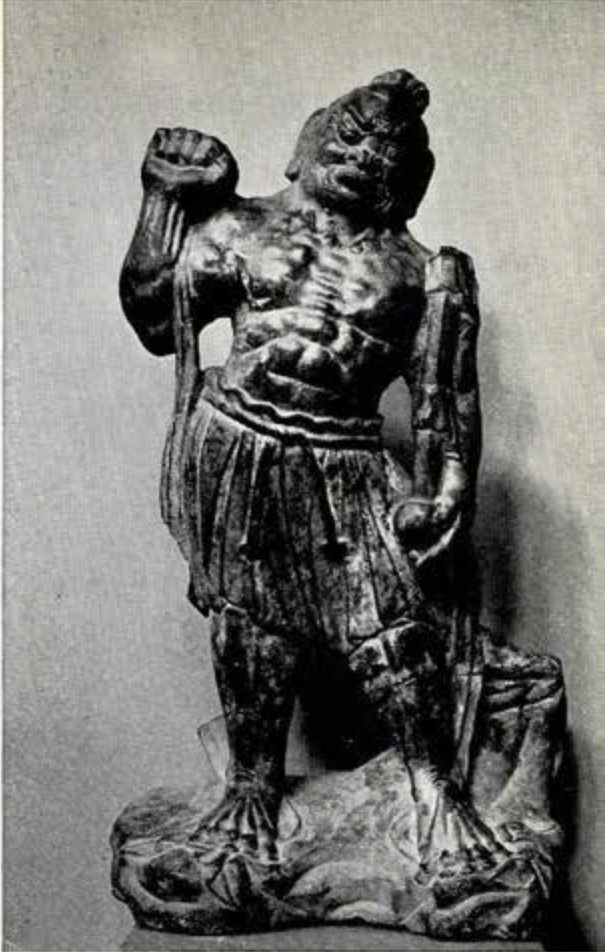
Image Number: 1305
One of a Pair of Guardians
Black limestone, grey patina. Typical for minor deities of this sort. Holds in his left hand a gourd supported by a strap on his shoulder, right arm upraised, fist clenched. Uninscribed.
Height 201⁄2 inches.
T’ang Dynasty, perhaps from Honan Province.
Given by C. T. Loo.
University Museum, Catalogue of Oriental Sculpture (1917), No. 21. Siren, Chinese Sculpture, pl. 480.
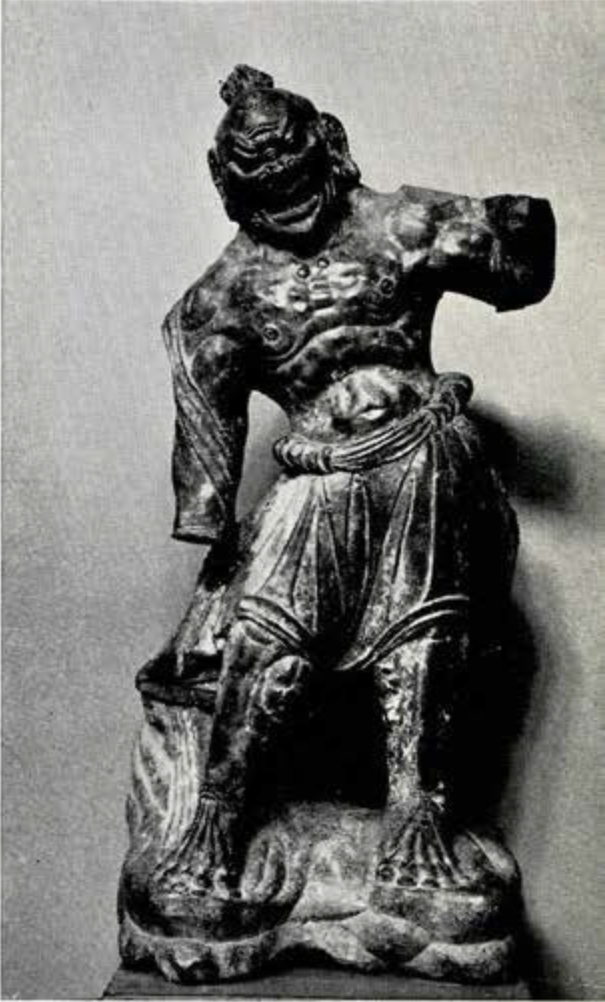
Image Number: 1306
One of a Pair of Guardians. Mate to the Above
One hand and one forearm broken off. Uninscribed.
Height 2l 1/2 inches.
Tang Dynasty, perhaps from Honan Province.
Given by C. T. Loo.
University Museum, Catalogue of Oriental Sculpture (1917), No. 21. Siren, Chinese Sculpture, pl. 480.
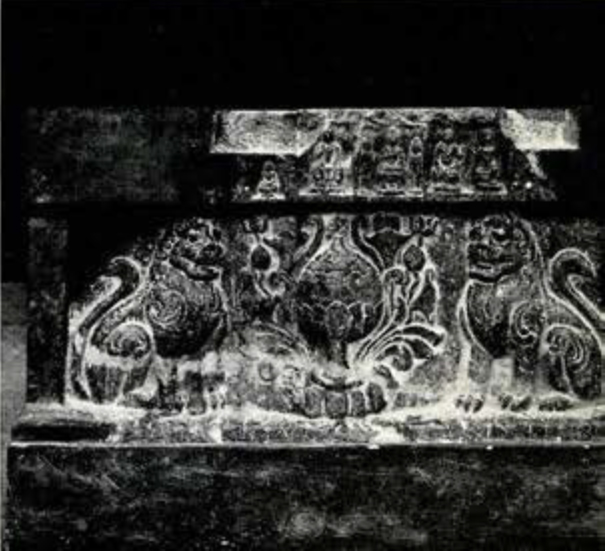
Image Number: 1412
Large Altar Frontal
Dark grey limestone, brown patina. Carved in high relief with two chimaera, in three-quarter view, guarding an incense burner from about the base of which curl lotus leaves and blossoms. Upper part, largely missing, has remains of a frieze of small niches filled with figures of the Buddha and bodhisattvas.
Height 2 feet, 6 inches.
Early Sixth Century. Uninscribed. It is said to have come from the same temple in the San-Yang district, Chihli province, as the Maitreya statue dated 514 A.D.
Given by C. T. Loo.
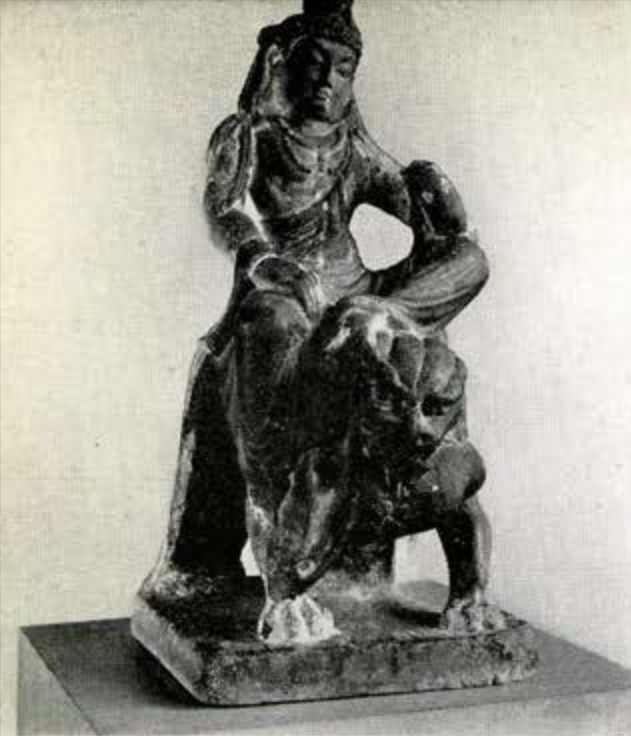
Image Number: 1284
Statuette of the Bodhisattva Mi Lei Fo Riding on a Lion
Coarse, light grey sandstone, traces of color and gilding, discoloured by fire. Left hand, which formerly rested against cheek, and forearm missing. Uninscribed.
Height 2 feet, 3 inches.
T’ang Dynasty. From the cave temples of T ‘ien Lung Shan, Shansi, or a nearby site.
University Museum Bulletin, March 1930. Siren, Chinese Sculpture, pl. 502.
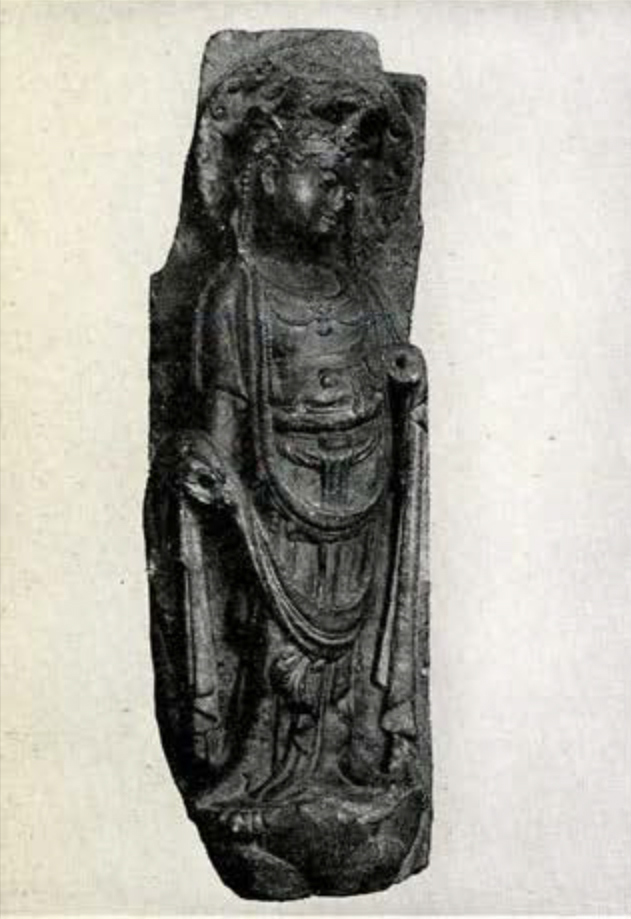
Image Number: 1286
Statue of a Bodhisattva
In high relief. Yellowish marble, brown patina, with traces of color. Head turned somewhat. Both forearms arc missing. Uninscribed.
Height 3 feet, 3 inches.
T’ang Dynasty. Siren attributes it to the province of Hopei. A companion piece was formerly in the collection of C. T . Loo.
University Museum Catalogue of Oriental Sculpture (1917), no. 18. Siren. Chinese Sculpture, pl. 543A. University Museum Journal, Vol. VII, No. 3.
Small Votive Stela
Yellowish marble. The top of the halo is missing. The stand is separate and each side of it decorated in low relief. Uninscribed.
Height 2 feet, 5 inches
The date of this piece is somewhat controversial. While it is of the style of the early T’ang Dynasty, Siren with considerable weight argues that it is a later production in the earlier manner, and associates it with a group of somewhat similar stelae, one of which bears an inscription which would seem to associate it with the reign of the Emperor Wan Li of the Ming Dynasty. Each piece of the group has the somewhat crowded handling of the background and they may be Ming products.
Siren, Chinese Sculpture, pl. 288. 60
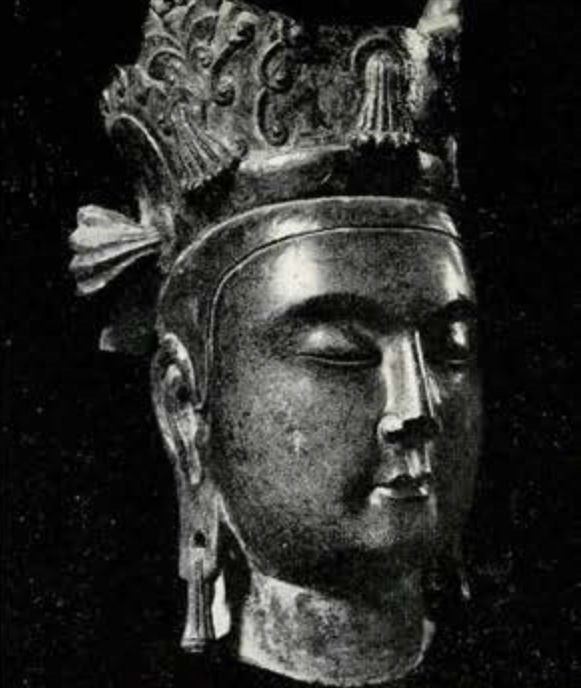
Image Number: 1325
Head of a Bodhisattva
Life size. Grey limestone, greenish patina. Headdress somewhat damaged.
Height 16 1⁄2 inches.
North Ch’i Dynasty. Perhaps from the Nan Hsiang Tang cave temples in Honan whence the trinity of large standing figures is supposed to come. The headdress with three tassels, one in front and one on each side, does not seem to identify what bodhisattva is intended to be represented. University Museum, Journal, Vol. V, No. 3. University Museum, Catalogue of Oriental Sculpture (1917), No. 20. Siren, Chinese Sculpture, pl. 475C.
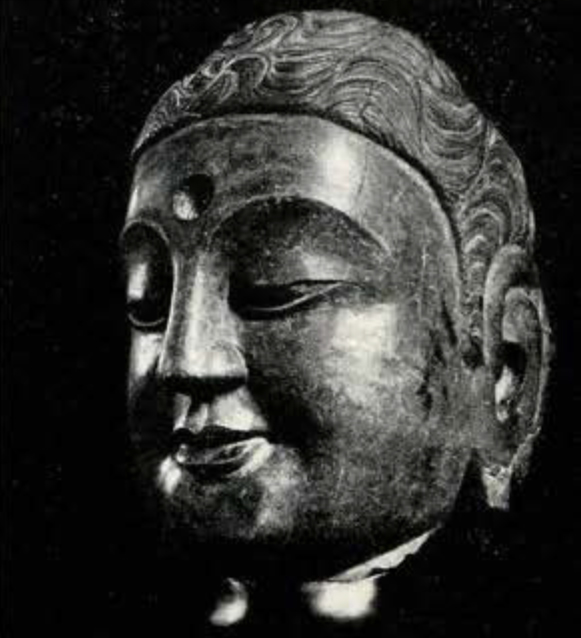
Head of a Buddhist Monk
Life size. Grey limestone, greenish patina. Nose repaired.
Height 15 inches.
North Ch’i Dynasty. Provenance probably the same as the foregoing head. The similarity of the hair arrangement with that of two full length figures, also attributed to the Nan Hsiang T’ang cave temples (Siren, 473 A, B) tends to confirm this provenance. University Museum, Catalogue of Oriental Sculpture (1917), No. 22. Siren, Chinese Sculpture, pl. 475D.
Set of Five Small Figures of Sakyamuni and Attendants
White marble, yellowish patina; traces of color. The figure of Sakyamuni is seated on a cylindrical throne and has a large circular halo. The right hand is missing.
Height 21 inches.
The two outer figures represent Ananda, the older wrinkled one, and Kasyapa, the youthful one. These were the Buddha’s two favorite disciples and their presence identifies him as Sakyamuni since it is only with this Buddha that Ananda and Kasyapa appear. Since it is a Sakyamuni group the two bodhisattvas flanking the central figure are probably Maitreya (Mi Lei Fo) and Avalokitesvara (Kuan Yin) the latter being the one that holds in its pendant right hand the palette shaped object, while Maitreya holds a lotus bud. Each of the four subsidiary figures stands on a lotus bud pedestal and is l foot, 4 inches in height. North Ch’i Dynasty. Probably from Hopei Province. University Museum, Catalogue of Oriental Sculpture (1917), Nos. 27-30. Siren, Chinese Sculpture, pl. 254.
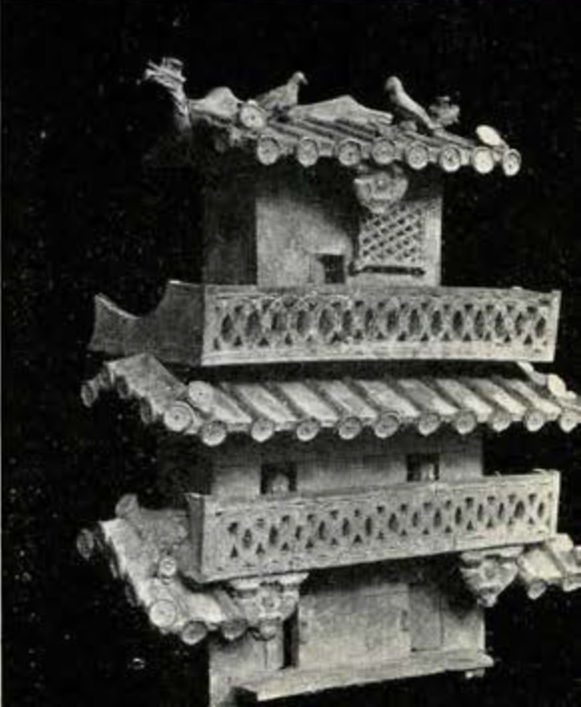
Spirit Dwelling
Green glazed pottery. Various small figures of attendants and animals are applied to the roofs and balconies. Of interest as an illustration of the architecture of the period. Late Han Dynasty, about 150 A.D. Unpublished.
Height 28 inches.
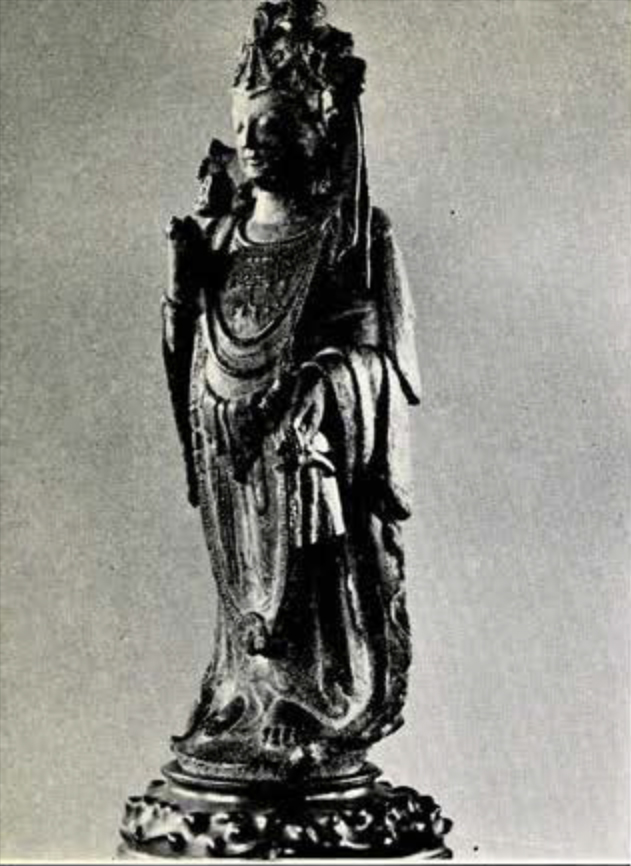
Image Number: 1285
Small Figure of a Bodhisattva
Marble with traces of pigment and gilding. Uninscribed.
Height 29 inches.
T’ang Dynasty.
University Museum, Journal, Vol. VII, No. 3. Siren, Chinese Sculpture, pp. 314.

Large Head of the Buddha
Grey limestone, brownish black patina, traces of pigment.
Height 22 inches.
T’ang Dynasty, probably from Honan Province.
University Museum. Journal, Vol. 5, No. 3; University Museum, Catalogue of Oriental Sculpture (19I7), No. 19; Siren, Chinese Sculpture, pl. 467D.



